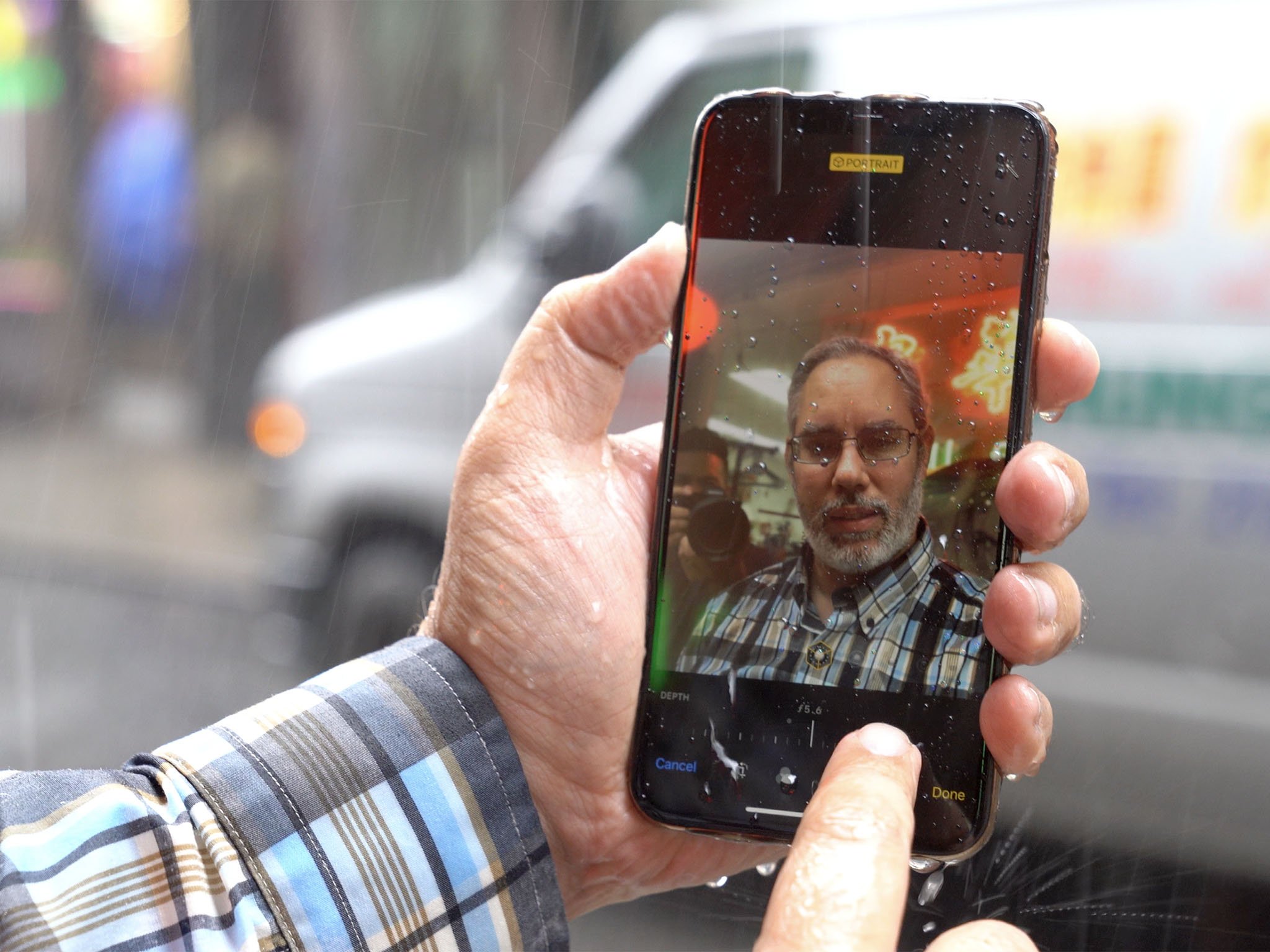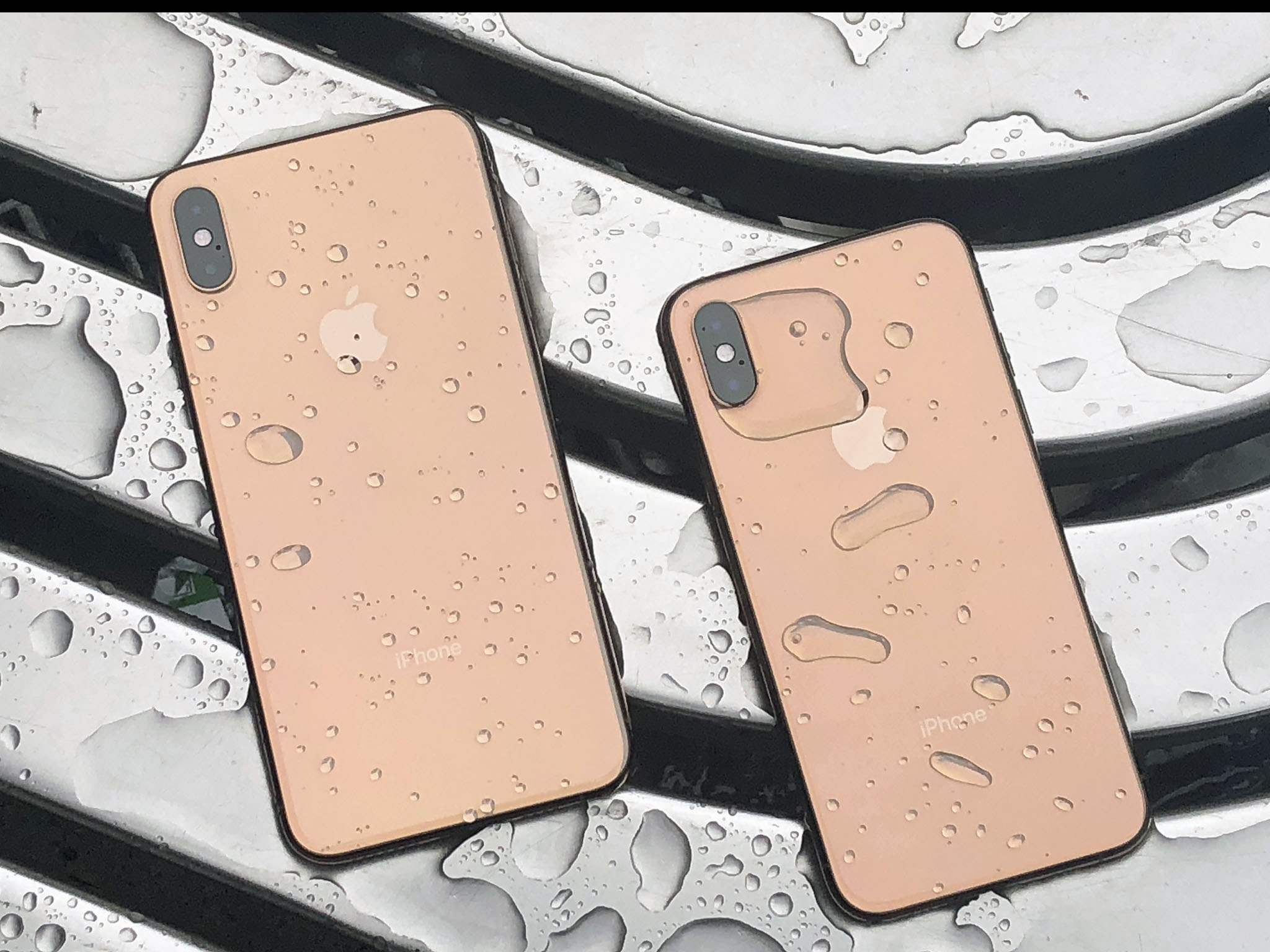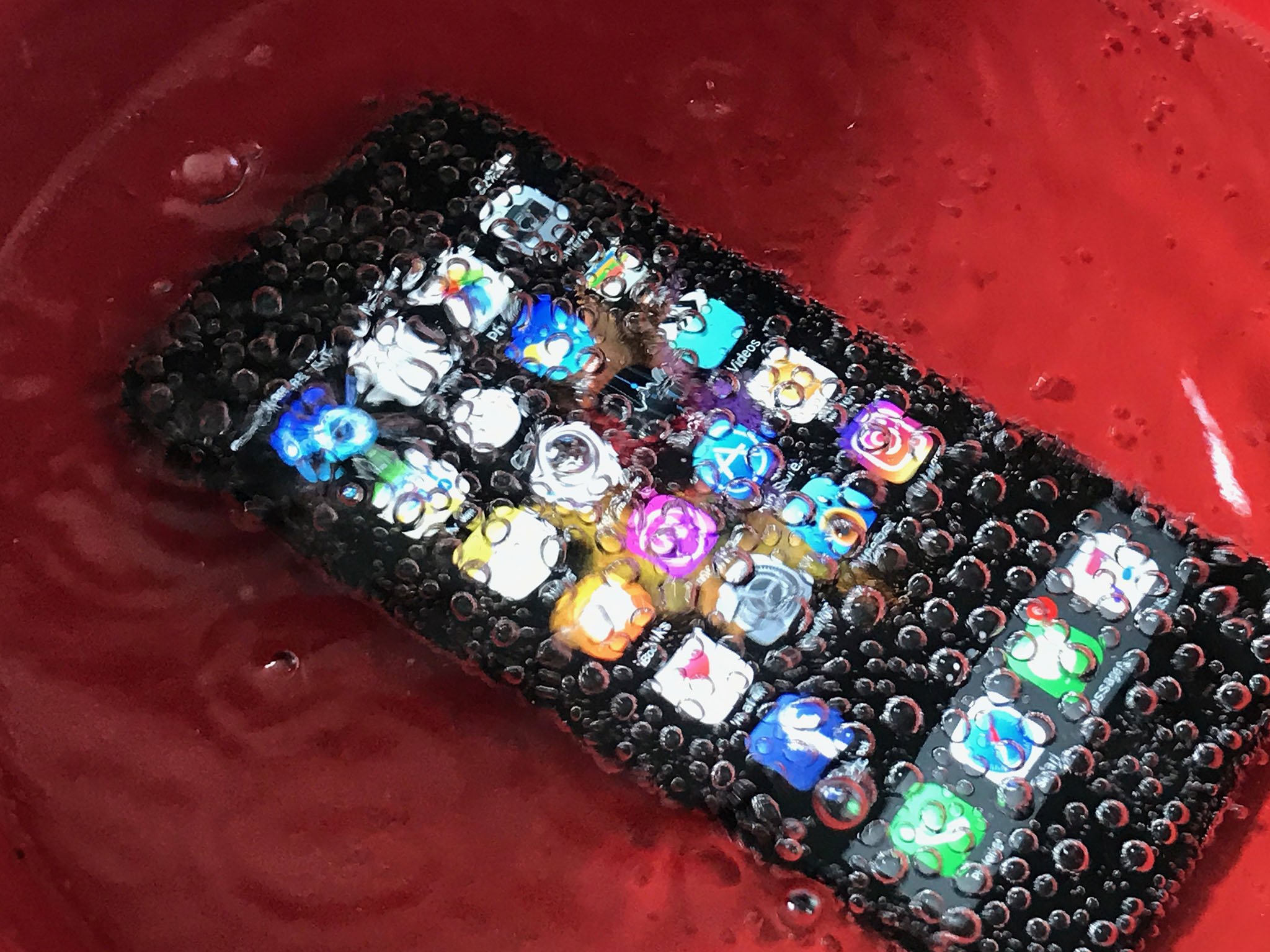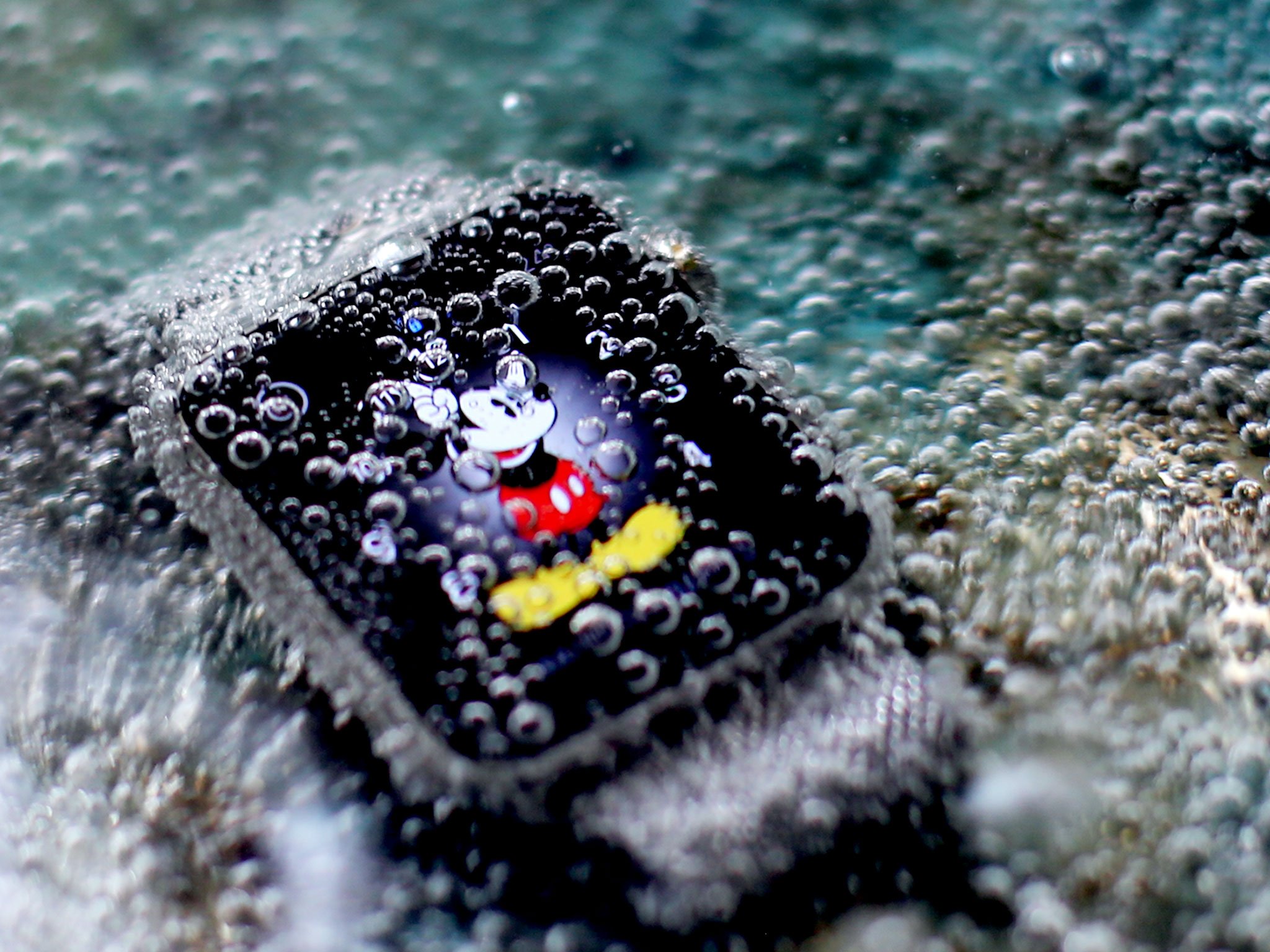iPhone 12 should change the water resistance game

You may think your iPhone — your any phone really — is water proof... but it isn't. It isn't even really water resistant, not for all water, not all the time. It's…. complicated. But I'm going to explain to you why that is, what you can do about it, and most importantly, what Apple could do about it with the iPhone 12 — or the iPhone after that.
I'll even toss in a Shyamalan twist in at the end. A good one from the first few films. (Yes, seriously.)
Resistance is Futile
Water resistance is technically: particulate and liquid ingress protection. In other words, any kind of dust or debris or coffee or cola or whatever. But, for most people, most of the time, the high order bit is… yeah… water resistance.
Meaning, if my phone or other device gets rained on or spilled on, splashed or doused, dropped in the sink or toilet, pool or lake, will it die like Sean Bean's character in… pretty much everything ever, or will it manage to survive, like… well, Mr. Bean in pretty much everything.
Because it can legit be the difference between having to make an AppleCare+ or insurance claim, paying for a costly repair or even more costly recovery or replacement, or just rinsing it off, drying it off, and going about your day.
Now, there is a system that supposedly classifies and certifies levels of water resistance — the IP or Ingress Protection, sometimes called International Protection, standard.
And I say supposedly because it costs money to get certified, so not all companies do it for all devices, and some of the classifications are left open for the companies themselves to set — which may sound like a student making and grading their own test. And, lastly, just because a device has a certain level of water resistance doesn't mean it resists all water, or all liquids equally, or that it'll even maintain that level of resistance over time because — and I mean, you had to know this was coming — resistance is futile.
Master your iPhone in minutes
iMore offers spot-on advice and guidance from our team of experts, with decades of Apple device experience to lean on. Learn more with iMore!
Phone 12 (2020): Rumors, release date, price, features, and more
Test Solutions

Now, some phones aren't water resistant at all. Yeah, even in 2020. For example, the first few foldable phones we've seen from Samsung and Motorola, the Fold and the Flip and the RAZR. They use hinge and screen technology that just simply can't be made water resistant at this time. And, I'm curious if that even matters to you? Let me know in the comments.
Other phones are physically, technically water resistant in every possible way, but just not certified or marketed as such. For example, with the iPhone 6s, Apple used seals and gaskets that added a considerable amount of water resistance to the device. But, Apple never went through the process to get an IP rating. They never even announced it as a feature.
It was just a test to see how well those seals and gaskets would work to reduce damage and support incidents. And then, Apple used the results and the data to improve the process and make the iPhone 7 officially, certifiably, marketably water resistant. More on that in a hot 3.5mm headphone jack minute.
And, just last month, OnePlus decided not to go to the expense of certifying the brand new OnePlus Nord as water resistant… even though they went to all the trouble of making it that way… anyway.
So, then, what do those certifications even mean? And what does any of this have to do with the iPhone 12?
Ingress Protection
Ok, so, unlike the iPhone 6s, with the iPhone 7, Apple did certify and market as water resistant. Up on stage. In the keynote. The whole tentpole bit. IP67, to be specific. With the iPhone XS, Apple took that resistance even further, to IP68. And with the iPhone 11 Pro, to… an even better IP68.
Secret decoder ringing that all out, IP is the Ingress Protection scale I mentioned at the beginning. 6 is the particulate rating and 7 or 8 is the liquid rating.
Particulate is really straight forward. 6 is as high as you can go and means, basically that it's dust tight: Dust can't enter, even in a vacuum.
The liquid scale is… wonkier. It goes up to 9 but the numbers aren't cumulative, so you don't have to pass a lower one, for say, stream or jet protection, just to pass the higher one, and it…kinda zigzags along the way.
There are also letters for like oil protection, or voltage, or quote unquote weather. But for phones we're just focusing on the numbers here.
7 means it's protected against immersion in water up to one meter at normal pressure for 30 minutes. But 8… 8 basically means… whatever the hell the vendor wants it to mean.
For the iPhone XS and iPhone 11, Apple wanted it to mean 2 meters for up to 30 minutes. And for the iPhone 11 Pro, 4 meters for 30 minutes.
Now, there's just a lot that needs to be explained here.
Under water

First, water means water. Plain water. If the water has something else in it, like salt from the ocean, chlorine from a pool, sugars from a coffee or cola, acid from orange or lemon, the risk of damage like corrosion just soars.
So, if anything but plain, pure water gets in contact with your phone you'll need to rinse it off with plain, pure water… and STAT. Then dry it off and leave it off to dry, regardless of what kind of water or liquid. Because…
Second, the more ports a device has, the harder it is to make that device truly water resistant. Apple may have deleted the 3.5mm headphone jack but there's still a SIM card slot and Lightning Port, and if you get your device wet, then pull out the card or plug into the port… well, you can still get some nasty results. So, seriously, after your stuff gets wet, let it dry before you use it.
Third, just because something is rated for up to one, two, or four meters at normal pressure for 30 minutes doesn't mean it'll immediately fail if it's immersed deeper, stronger, or longer. Odds are, it might be just fine.
But that's what you're playing — the odds.
Sure, we've all seen articles and videos about iPhones being lost in basically the Mariana Trench and then recovered from the belly of a Jason Stathman box-offer bombing megalodon. And in perfect working order. Selfies and everything, all intact.
And by that I mean the bottom of a river by a trout fisher, but still the selfies and whatever. Happens just enough to keep making headlines.
But, seals and gaskets break down under deeper, stronger, or longer exposure. Even just over time. Especially if they've also been dropped, knocked, or exposed to other substances during that time.
Dunk it once, should be fine. Multiple times even, maybe no problem at all. But one time… Any one time, water could get in, salt, sugar, acid especially, and the protection could fail, and then your phone could fail right along with it.
Which is why Apple and other companies market the water resistance as a feature, not a guarantee. Meaning it's not typically covered under warranty.
So, if you bring it in, and it's been damaged by water, the little pink tattle-tale spots inside will just light up, bright as neon, to let them know, and then if you don't have AppleCare+ or similar insurance, you'll be on the hook for the repair or replacement, maybe even recovery if you don't have a backup and really, really need the data.
Seriously… seriously, try not to get your phones wet, and dry them off carefully and thoroughly if and when they do.
But, I hear you, I hear you, that's all stuff that YOU can do. What about what Apple can do with the iPhone 12 and beyond?
Swim Proof

Ok, so, the simplest way Apple could improve iPhone water resistance this year… is to just repeat what they did last year.
In other words, just like they brought the higher-end iPhone XS's 2 meters of water resistance to the entry-level iPhone 11, they could bring the higher-end iPhone 11 Pro's 4 meters of water resistance to the entry level iPhone 12. That would give better protection to even more people.
And if they really want to keep the pro more… pro… they could also jack up the new, higher-end iPhone 12 Pro's water resistance as well to keep it on top. Like 6 meters maybe?
I mean, it's still a buffer, just a bigger buffer. But, with buffers, the bigger the better.
And because it's IP68, it's really just a matter of Apple deciding how confident they are in their implementation, then testing and certifying against it.
Which is really, really just a matter of Apple deciding how much of a marketing differentiator and customer attachment point better water resistance really is… at this point. In other words, how much it matters to us.
I mean, Apple gave it stage time last year, so obviously it's on the list. But is it high enough on the list for Apple give it stage time — or, rather, camera time in 2020? — two years in a row? Let me know what you think in the comments.
The other option is… more extreme. The original Apple Watch was IPX7. The X just meant Apple didn't bother to certify against particulates, only liquids. But it was roughly the same as the iPhone 7… if better in some ways we'll get to in a moment. Anyway, people showered with it. Even swam with it. But it wasn't really meant or rated for any of that.
The Apple Watch Series 2 and on have been what Apple calls swim-proof. Yes, swim proof… not water proof. But Apple does currently list it at up to 50 meters, no IP rating given.
To achieve that, and maintain a functional speaker system, Apple created a mechanism to eject the water. Yeah, clever grills.
But, the reason it was already better in some ways is because, from the start, the Apple Watch didn't have any ports. Well, I mean, it technically has a mini Lightning port, but it's all sealed up and hidden inside the band groove, and not accessible to anyone this side of an Apple technician who needs to use it for technician-y things, like running diagnostics and performing a DFU.
And… some of you already know where this is heading, don't you? Yeah, rumor has it, Apple may be removing the Lightning port from a future iPhone. Probably not this year, but maybe starting as soon as next year.
Not to replace it with USB-C. But to kill it just to watch it die.
Or, as I have no doubt it appears on some report somewhere, to reduce potential points of hardware failure. Just like they did when they replaced the physical Home button with a virtual one on the iPhone 7… before replacing it entirely with gestures on the iPhone X. And when they deleted the headphone jack on that same iPhone 7 and announced their first IP67 rating.
But would Apple go that extreme and make the iPhone 12 or more likely 13 as swim-proof as the Apple Watch? Well, no, because nobody is really that interested in swimming with their iPhones.
And here's that "Shyamalan was a ghost the whole time" plot twist:
What people may be interested in doing is taking underwater photographs and videos with their iPhones. Even if it's limited by depth and time, that's the kind of feature it's easy to see getting stage time. Camera time. Whatever. It'd make for one hell of a demo.
Tap a button, it goes into underwater mode, the phone turns off multitouch to prevent accidental interactions, just like watch does, and you can use the volume down button to change modes and the volume up button to take photos or start/stop video.
Maybe with a computational water mode that does for the depths what night mode does for the darkness. Just turn murkiness into magic.
Then, click the power button a bunch of times, the speakers spit, and everything else comes right back on.
Would you want that? Let me know. I mean, people have been using their iPhones to take photos and shoot video underwater for years already, and many have been fine and others have failed, because they were just never made or intended for that.
But what if they could be?

Rene Ritchie is one of the most respected Apple analysts in the business, reaching a combined audience of over 40 million readers a month. His YouTube channel, Vector, has over 90 thousand subscribers and 14 million views and his podcasts, including Debug, have been downloaded over 20 million times. He also regularly co-hosts MacBreak Weekly for the TWiT network and co-hosted CES Live! and Talk Mobile. Based in Montreal, Rene is a former director of product marketing, web developer, and graphic designer. He's authored several books and appeared on numerous television and radio segments to discuss Apple and the technology industry. When not working, he likes to cook, grapple, and spend time with his friends and family.
